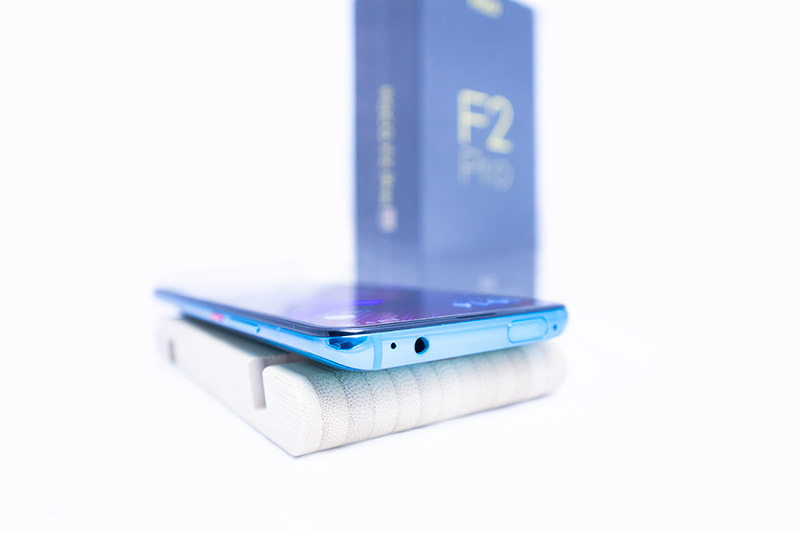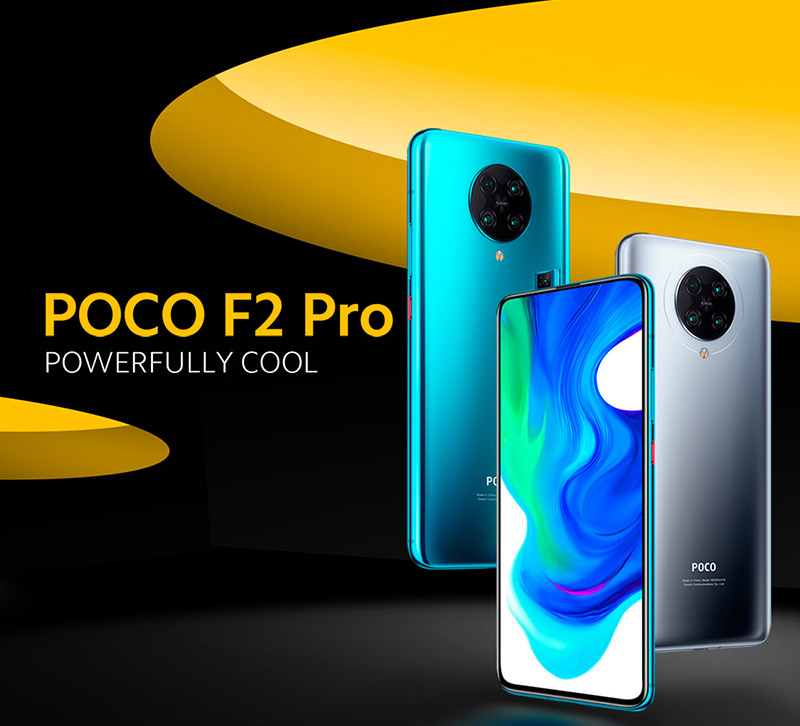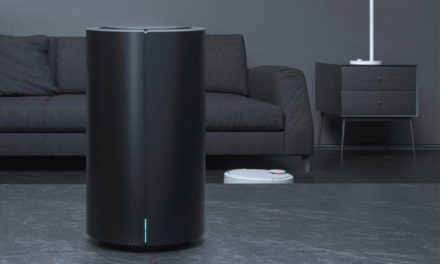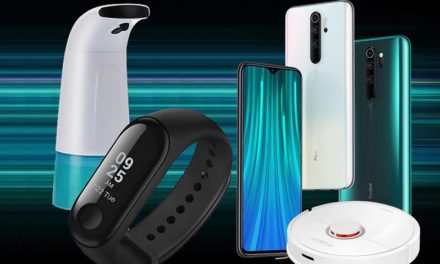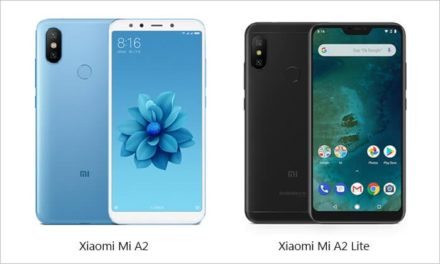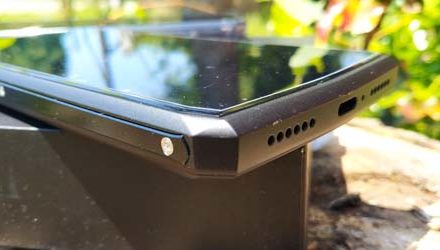
Xiaomi Poco F2 Pro - the cheapest top phone
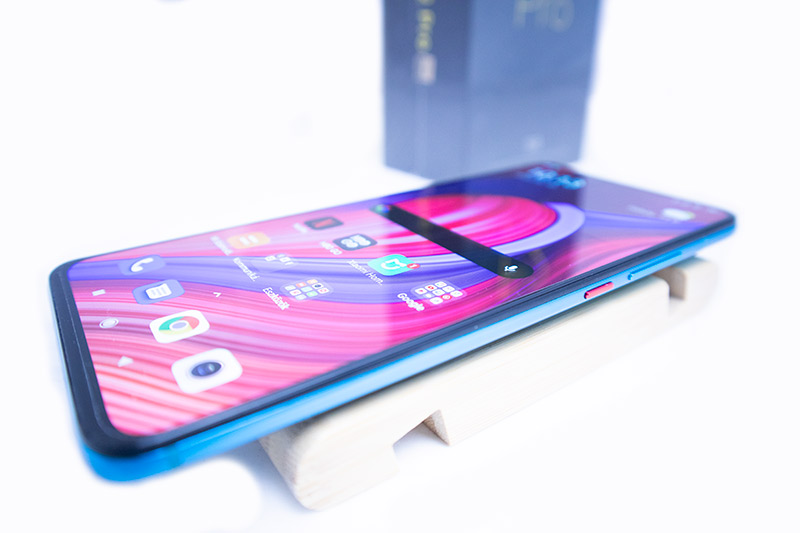
If you are looking for the strongest at the best price, park it, you are in the right place!

contents show
Introduction -Poco F2 Pro
Xiaomi launched a new phone under a new brand name two years ago, much to our surprise. It was the Pocophone F1 that got the top hardware at the time, but it lagged behind the flagships in some capabilities, such as cameras, and in the quality of material use.
We were expecting a Pocophone last year but it didn’t come in the end, the phone we thought would be the new Poco finally came out as Mi 9T Pro.
We already thought that Pocophone’s career, no matter how terrifying the start, ended with the first phone when the news arrived, this year the successor would be born. As it turned out, the Poco F2 Pro is exactly the same as the Redmi K30 Pro already introduced in China, except, of course, that the Poco is a global version, ie it will be e.g. 4G.
What’s certain is that when you look at the Poco F2 Pro, the recipe looks very similar to what it was two years ago for the F1. That is, the strongest iron available is put in a very slightly cheaper (but as you will see wonderfully beautiful) housing, a slightly weaker group of cameras is inserted into the back panel, and the low-cost top phone is essentially done.
In this article, we’ll go over what the new Poco knows, take the cell phone from head to toe, stay tuned!
If you’re lazy or reading, check out the video test here:
Packaging - Poco F2 Pro
A simple, yet elegant black box that retains the yellow inscriptions already familiar to the Poco F1, although the character type and font size have also changed to its advantage.
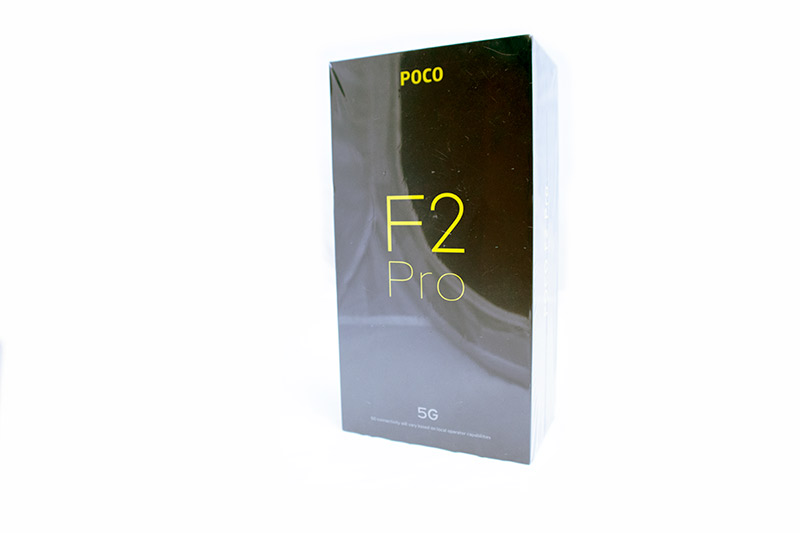
The box contains only the minimum required accessories, a silicone backing with a flashy and non-slip pattern, a charging cable, and a 30-watt charging head. It could even be said to be cost effective, but lately it’s pretty much this expected list, maybe they could have put a foil on the glass.
Let's see the phone quickly!
Exterior - Poco F2 Pro
When you look at the Pocophone F2 Pro, there are plenty of tokens to jump in, but the cheap or discounted point isn’t among them. In the case of the F1, the difference was clear in terms of the material use of the cheaper and more expensive devices, but in the case of the F2 Pro, at least at first glance, this was completely gone.
So the bottom line is, the Poco F2 Pro deserves a star five because of the exterior!
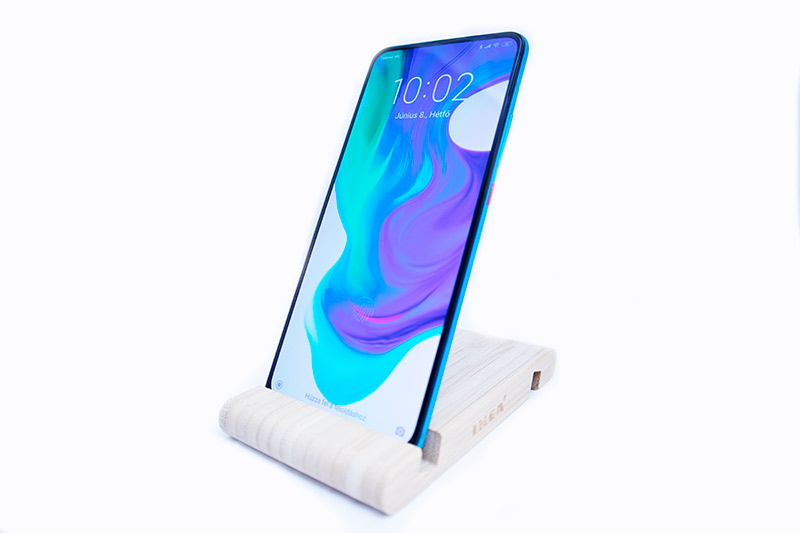
The phone is huge in both width and length (7,54 cm x 16,33 cm), but it’s no wonder the 6,67-inch diagonal display should fit. It has a large but not very thick edge, only 8,9 millimeters, and weighs 218 grams. It’s typically not tearing off a person’s hand with weight, but you feel like you’re in a substance category. Sure, it’s not one of the lighter phones, devices with a similarly sized display are usually lighter. Perhaps the extra weight of the large battery and the mechanics of the self-camera cause this.
The phone is available in four colors: Neon Blue, Electric Purple, Cyber Green, and Phantom White.
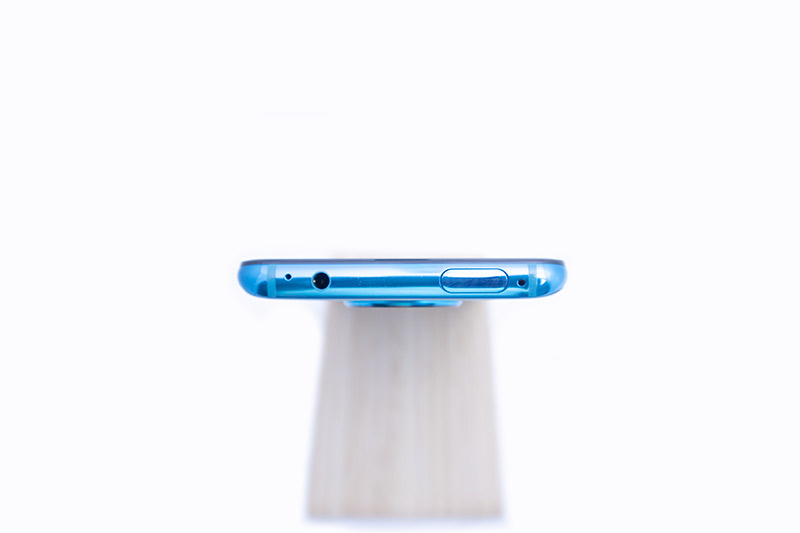
The frame of the housing is made of aluminum, the front and back have Gorilla Glass 5 glass, at least as described. It could even be plastic on the back, but it's really more glass on the look. The point is, it looks very good.
The glass above the display (thankfully) is not the curved edge (only 2,5 D), which means that you don’t have to “enjoy” the curved AMOLED display for pretty much anything, and chances are you’ll find usable glass foil that protects it from scratches . The phone itself is a pretty slippery piece anyway, it’s definitely worth putting on the back cover, because without a chance, it will knock on the floor soon.
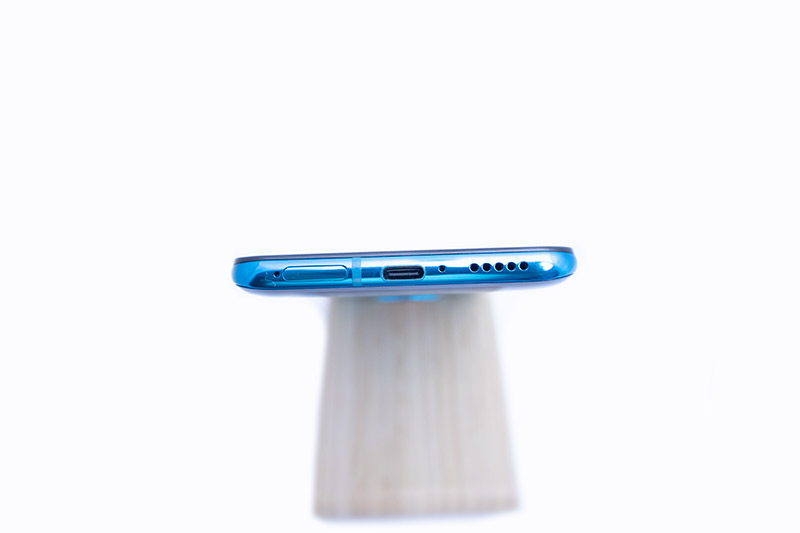
Let's see the edges! Interestingly, below is the SIM card slot. This is because in the usual place, on the top left, it simply did not fit the mechanics of the self-timer camera. Next to the SIM tray is the USB Type-C connector, and on the other side of the buckle is the standard speaker grille. From the fact that we find a grid, it is clear that there is no stereo sound.
On the right is the power button and the volume control, the interesting thing here is that the power switch is red for sportiness, but I'll write about that a little later.
On the upward-facing side of the frame, you’ll find a jack connector (hooray!), An infrared controller (hooray, hurray!) And the top of a self-popping self-timer camera. From the latter, it is obvious that there will be no camera hole or camera island on the front panel.
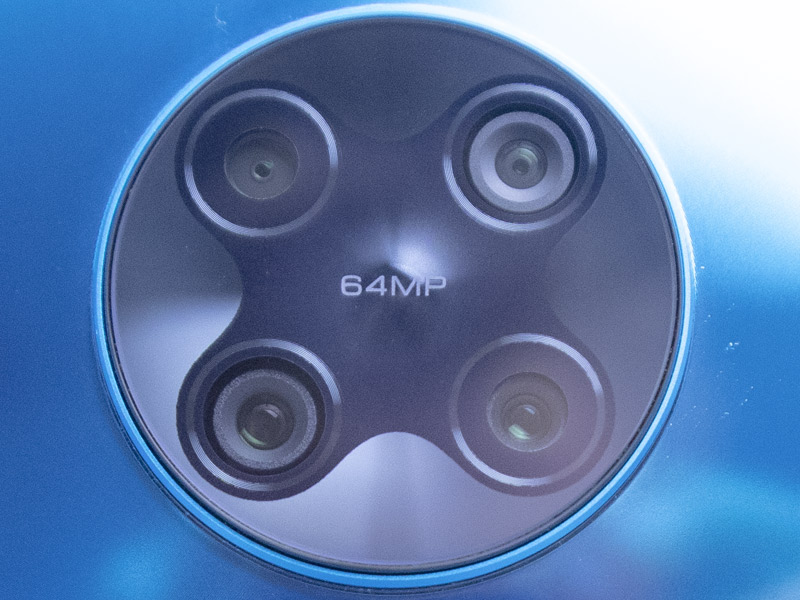
On the back we find an interesting and showy group of cameras. There are four optics on the circular island, including a 64MP caption, from which we already knew the resolution of the main camera. In my opinion, it was a good idea to center the camera island, because this is where the phone is thickest, so this is where it protrudes the least from the back cover. Of course, there is no fingerprint reader, which is already under the front panel glass of a top phone.
The Poco F2 Pro is really very flashy from the outside, but the java, hardware, and usage are just coming, so read on!
Hardware - Poco F2 Pro
Processor, memory, mass storage
As usual, we start with the central unit, which we call a processor for clarity, but we know it’s not that, it’s a SoC that integrates a lot of everything from 4G and 5G radios to procin to memory controllers and graphics accelerators. That is, it is a complete system within a chip.
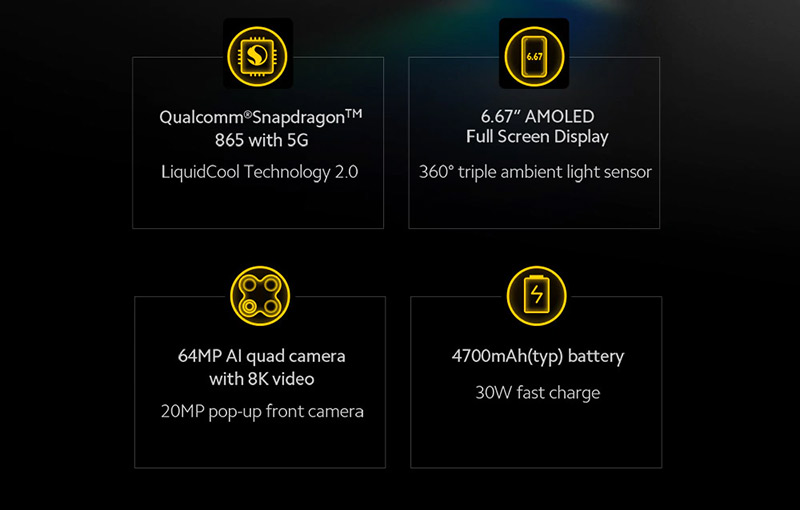
Well, the Pocophone F2 Pro got the QualComm Snapdragon 865, the most powerful mobile-mountable SoC currently available. With this, it has caught up with devices like Samsung Galaxy S20, S20 + or Ultra, Vivo IQOO 3, Realme X50 Pro, ASUS ZenFone 7 or its partner Xiaomi Mi 10 and Mi 10 Pro.
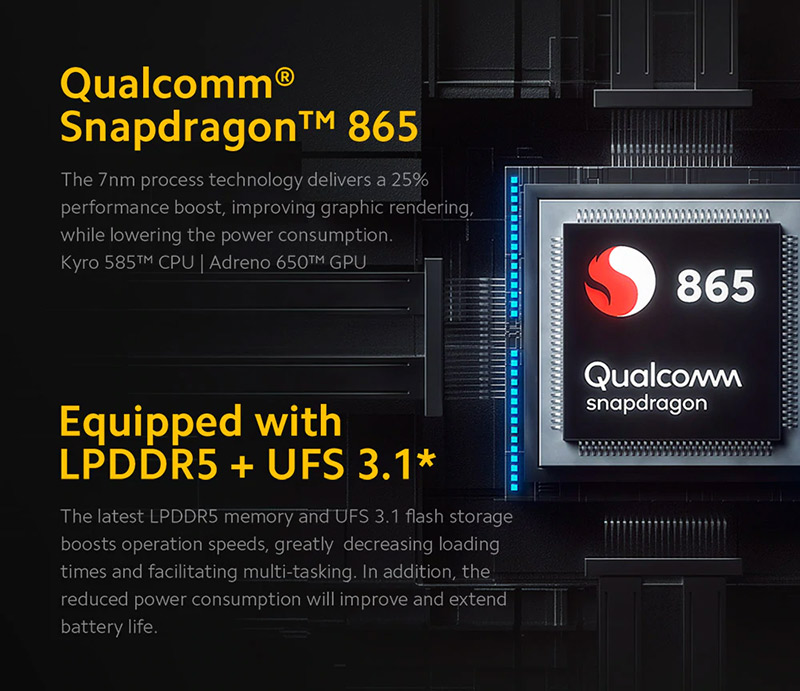
Let's see what's inside the SoC! The chip, which is made with 7-nanometer manufacturing technology, has an 8-core processor. It features a 2,84 GHz Kyro 585, three 2,42 GHz Kyro 585 and four 1,8 GHz Kyro 585 cores for scalability, high performance, and energy-efficient operation. The proci is, of course, 64-bit and supports the ARMv8-A instruction set.
In addition to the CPU, the graphics accelerator is an Adreno 650 GPU with a maximum clock speed of 587 MHz. The integrated memory controller is dual-channel and also handles the LPDDR4X and LPDDR5 modules, which is especially useful in this phone. This is because the device with 6 GB of memory has LPDDR4X, while the 8 GB version has faster LPDDR5 modules. The memory clock is 2570 MHz.

Two versions are also possible for the built-in storage. In addition to 6GB of memory, we get 128, while in addition to 8GB, we get 256GB of UFS 3.1 storage.
What’s so interesting about SoC and memory is that the Pocophone F2 Pro also got special liquid cooling, and even Xiaomi’s second-generation LiquidCool technology (LiqiudCool Technology 2.0). This helps distribute the heat generated inside the enclosure so the processor can continue to run at full capacity before overheating protection reduces clock signals. According to factory data, this is one of the largest multi-layer liquid coolers among mobiles, covering 28 percent of the entire internal structure and reducing the processor temperature by 14 degrees.
Display
A top phone can’t be anything other than an AMOLED panel. With the Xiaomi MIX 3, I really liked that the camera didn't crash into the display, and so far Xiaomi has only been able to provide such a solution for the Mi 9T and 9T Pro unveiled last year, though there was a periscope camera. The unique slider of the MIX 3, ie the camera popping up behind the pull-down display, remained a unique solution, the Poco F2 Pro also got a self-contained camera that stood out from the top frame. We no longer have to be afraid of the technology, as they have already been able to try it out in the 9T models and have been able to improve the mechanics ever since.
The display-to-front ratio has improved due to the disappearance of the camera island, in the case of the F2 Pro the display already occupies 87,52 percent of the front panel, which means that the frame has not become too thick around the glass. As you can read above, the panel has a picture diagonal of 6,67 inches (16,94 centimeters) and an aspect ratio of 20: 9, which comes with a width of 6,95 inches and a height of 15,45 inches.
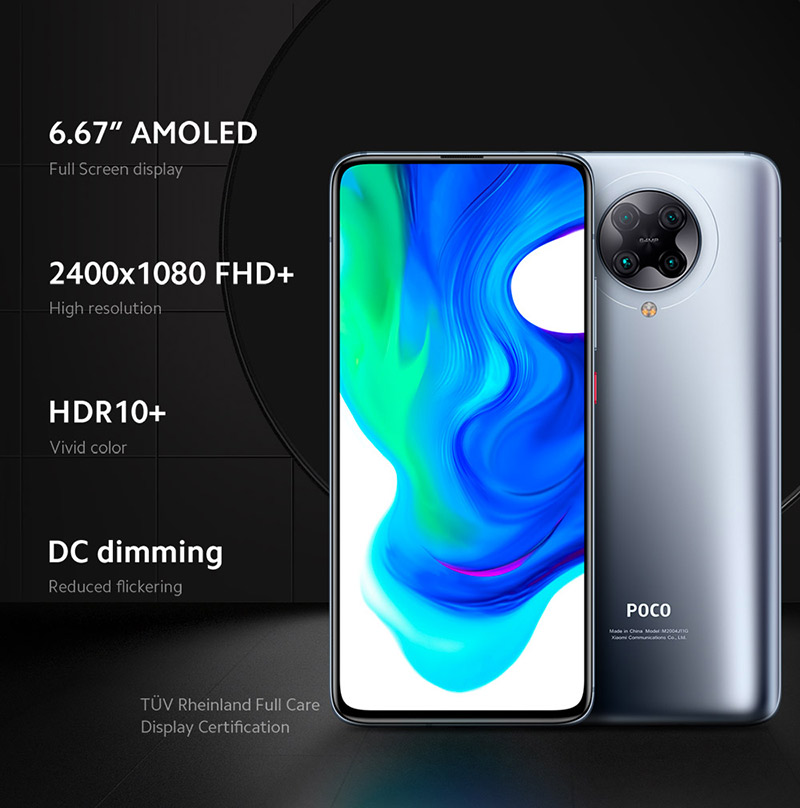
The resolution of the AMOLED panel is 1080 x 2400 pixels, which results in 395 ppi or pixel density. The capabilities of the AMOLED will, of course, be immediately apparent when you take your Pocophone F2 Pro in your hand and turn it on. The 24-bit color depth, 500 CD / m2 brightness, which can increase up to 800 cd / m2 in car mode, the huge contrast ratio and HDR10 + capabilities give an impressive picture quality. Honestly, I haven’t seen such brightness on display yet, even though I already had some devices in my hand.
To say something negative, the Poco F2 Pro's display didn't get an extra-speed image refresh, maybe a 90 Hz could have been noticed. However, due to the display, you cannot touch the front of the back.
Other skills
Let's start with the radios! Thanks to the Snapdragon 865, we already have 5G network support, so the fastest mobile data transfer technology is in addition to the more widespread 4G. For the latter, of course, we also get B20 800 MHz support.
Perhaps unsurprisingly, we also get version 5.0 from Bluetooth, just as the fact that the Wi-Fi interface is also the latest, i.e. it supports the ax standard, better known as Wi-Fi 6
Navigation is guaranteed to be no problem, the phone also supports four satellite navigation systems, in addition to the usual and basic GPS, there is also support for GLONASS, BeiDou and European Galileo systems. That is, we can already be sure that with a working phone in our pocket, we will not have much chance of getting lost.
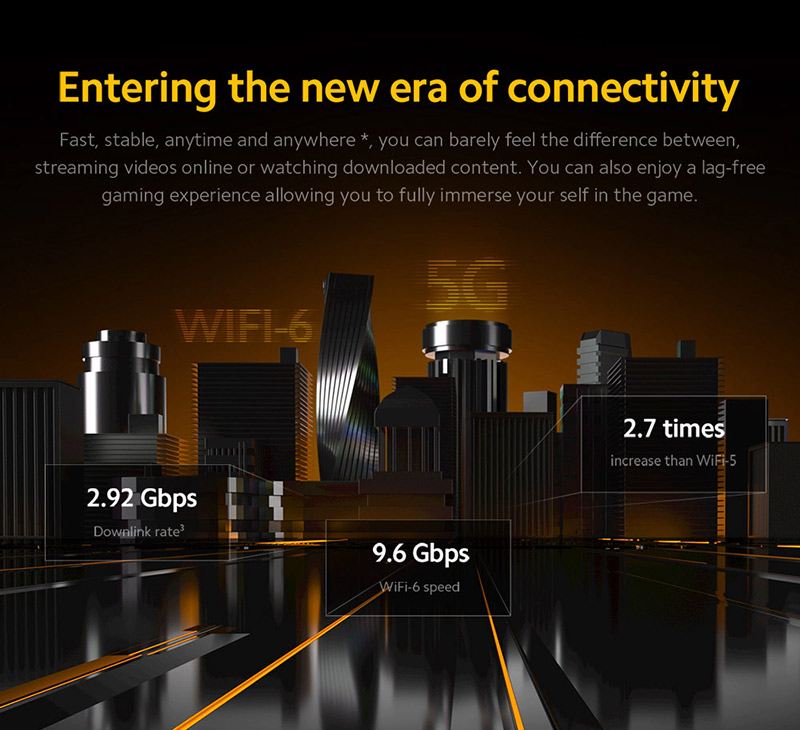
There is also something new in the field of sensors. Of course, we get everything we could wish for. It also has a proximity sensor, accelerometer, compass, gyroscope, pedometer, gravity sensor, geomagnetic sensor, and fingerprint reader. What has undergone serious development is the operation of the light sensor, more specifically the light sensor system. Now, instead of just one, but three sensors, it monitors the light conditions around our phone and adjusts the brightness of the display accordingly. Of course, the three sensors are not in the front, we can find one on the back and one on the side.
Slowly we get to the end of the abilities and the cameras can come. What’s left out is even NFC, of course, it’s also suitable for payment, and we haven’t talked about the sound of the phone yet, although in addition to the picture, it’s also important. The mobile supports a lot of codecs that can be used to bring better quality sounds from our earphones. These are AAC, AAC +, AMR (-WB), apt-X (and HD), or FLAC, to name just a few.
Finally, the battery, which has yet to be mentioned. Built into the housing, we get a 4700 mAh capacity lithium-polymer unit, which of course comes with a fast charge, even 33 watts. What, on the other hand, somewhat incomprehensible to me, didn’t fit into the package is wireless charging. Okay, the battery is big, the fast charge pumps electricity in moments, but a wireless charge might have had to fit into a $ 500 mobile phone. It hurts a little.
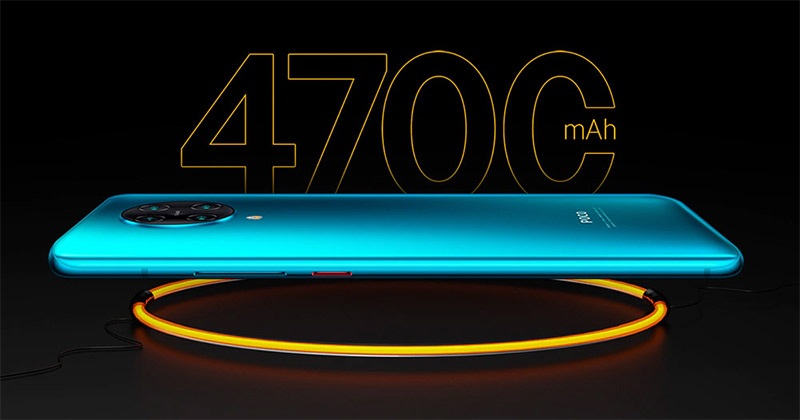
According to factory data, this battery capacity provides enough power for 17 days of standby time, 13 hours of continuous gaming or 6 hours of continuous video. If you want to make a lot of phone calls, you can talk for up to 36 hours at a time, if you’re a movie lover, you can video for more than 25 hours on a single charge. So, this battery meets a lot of today's expectations.
Software - Poco F2 Pro
The phone comes with an interface called Poco Launcher. This is based on MIUI 11 and Android 10. Anyone who has used MIUI before will also love Poco Launcher because the two interfaces are essentially the same. What is different is the default settings.

For example, by default we don't find an app interface under MIUI, I know a lot of people hate that MIUI packs everything from the default to the scrollable home screen. However, with MIUI 11, we can now switch the interface to similar to the basic Android, and we will have an application interface. Well, here it is the other way around, the apps are turned on by default, and if we turn it off, we get the familiar interface of MIUI.
If we’ve already talked about apps, there’s one thing I really like. At the top of the applications page, you get a grouping of topics, which means that you don't have to pack the related things into subdirectories, you can also do this with the tabbed topic system. Another big red dot!
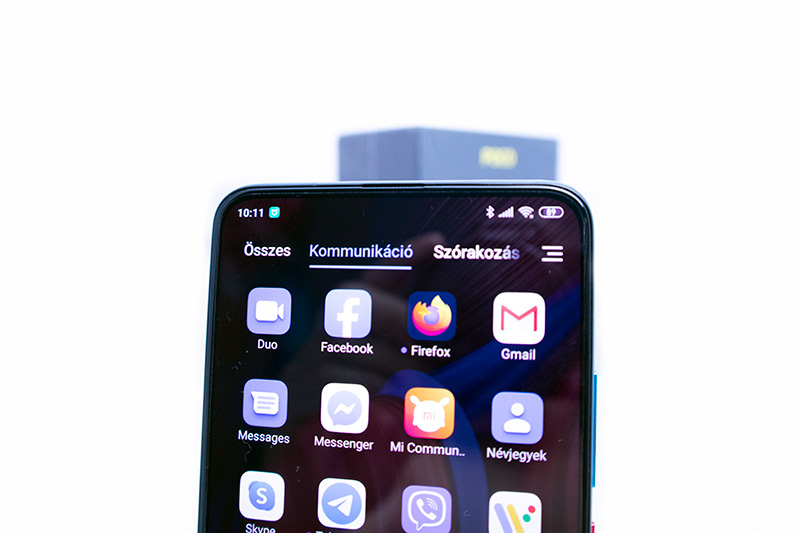
As we’ve gotten used to from MIUI, customizability is pretty rough. Color profiles for the display, reader mode, now a dark mode that covers virtually every program and surface, plenty of Always on Display backgrounds, widely adjustable vibrations, and millions of other options. If you are already vibrating, it is worth mentioning that the new vibrating motor works very smoothly. It knows everything from quite fine, fly vibrations to hard taps, sometimes maybe a little too strong. True, since this is also controllable, I can't think of it as a real mistake, everyone can adjust the vibration intensity to their liking.
So far, I haven’t liked the auto-changing backlight - whether the 3-sensor solution got better, a little later about that - so I always dragged the slider manually. This is good as long as I don’t want to make a phone call in the morning, in the scorching sunshine, with my phone down in the evening. That's when, to put it mildly, I don't see shit.
Xiaomin has now come up with a solution for this, called Sunlight Mode. When auto brightness control is off, this mode maximizes brightness even when strong sunlight is detected. Huge idea!
Finally, issues affecting players. Of course, we find Game Turbo mode, which is perhaps the norm for Xiaomi. This treats resources differently when playing, whether it’s the processor or the use of mobilnet. What’s a little more than we’re used to is that with the Poco F2 Pro, you can create different profiles for different games, even setting the capabilities to as depth as the sensitivity of the touch on the screen.
A bit related to the game, more precisely to the needs of the players, is that the light game of the self-camera can be set from a separate menu. Here are preset profiles that change the sound effects, and you can also choose from several colors for the flashing light.
Cameras - Poco F2 Pro
Let’s start with the selfie camera, if only because we know the least about it. What we do know is that we can take 20 megapixel images and 1080p videos with it, the latter at a speed of 30 frames per second. The sensor size is 1 / 3,4 ”, the pixel size is 0,8 µm, the aperture is f / 2.2, and it supports HDR shooting mode.
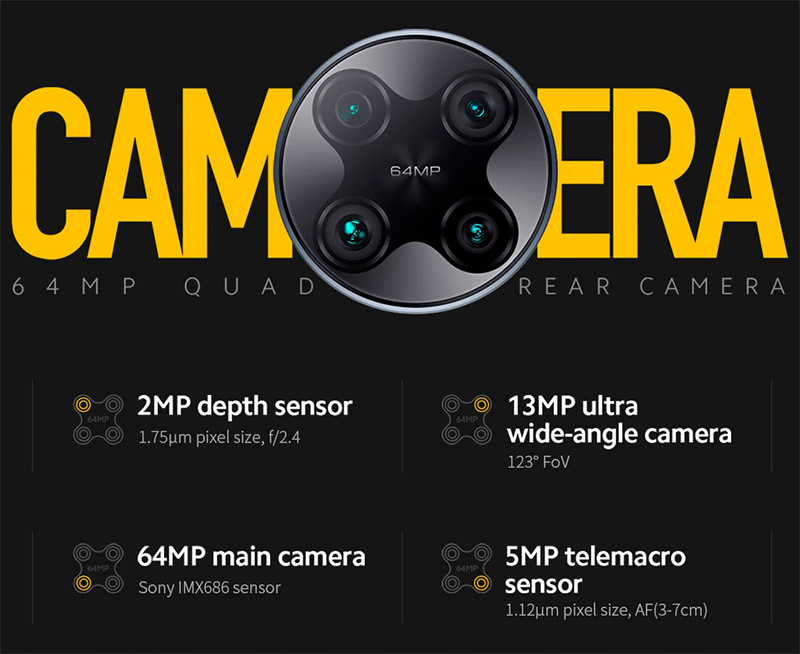
Importantly, like last year’s Mi 9t and 9t Pro phones, fall protection has been built in here as well. This, of course, does not protect you from falling, but pulls the camera back, literally in a matter of moments, if the sensor detects the cell phone has been dropped.
At the back, as you may have read, we find four cameras. The main camera is a 64-megapixel Sony IMX686, which works as usual with 4 in 1 super pixel technology, but, and this is very important, it is able to take up to 64 megapixel images in a native way, so the technology in the camera allows the sensors should work separately. For some Samsung sensors, although they use 4-in-1 technology, meaning the number of pixels is the same as the number of pixels on a similar Sony sensor, they cannot be used natively. This means that although the phone can be switched to use the camera at full resolution, the resulting image will be scaled up, meaning the quality will be much worse than the native Sony sensor.
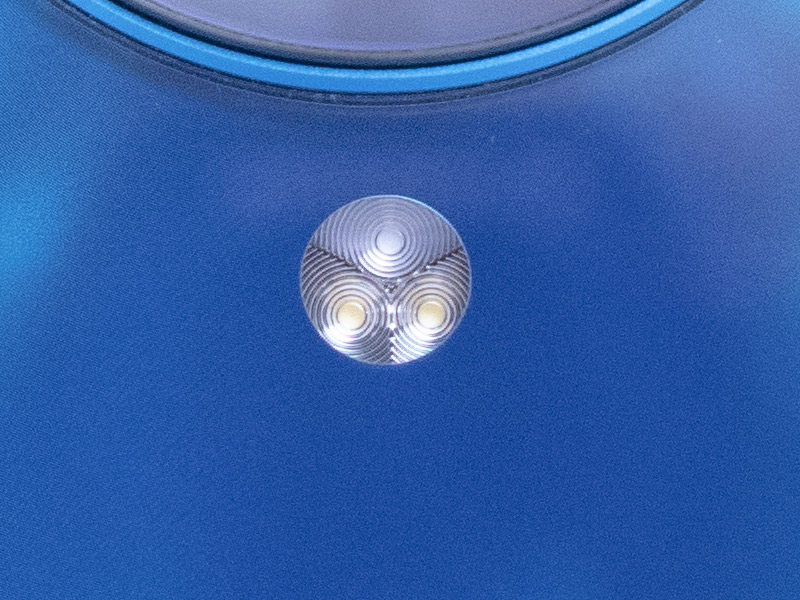
We have deviated a bit from the subject, turning back with a sharp left! So the camera’s sensor is a 64-megapixel Sony IMX686 with a 1 / 1,7 ”sensor size, a (native) pixel size of 0,8 µm, and an aperture of f / 1,89. Using the 4-in-1 method, 16 megapixel images can be taken, but as I wrote, we can use up to 64 megapixel resolution. Whether this makes sense and, if so, how much, the tests will reveal.
More importantly, the camera has been given a seven-member lens system, which is at least equal in number of members to the lens system in front of the Xiaomi Mi Note 10 108-megapixel camera, for example.
Of the remaining three sensors, two can be used for photography, and one is the usual depth sensor, which is responsible for accurately blurring the background. What we can use is an ultra-wide-angle camera that has a resolution of 13 megapixels, meaning it is already usable. Its viewing angle is 123 degrees. The aperture value is worse here, f / 2,4, but the tests will show how useful it can be used in low light interiors.
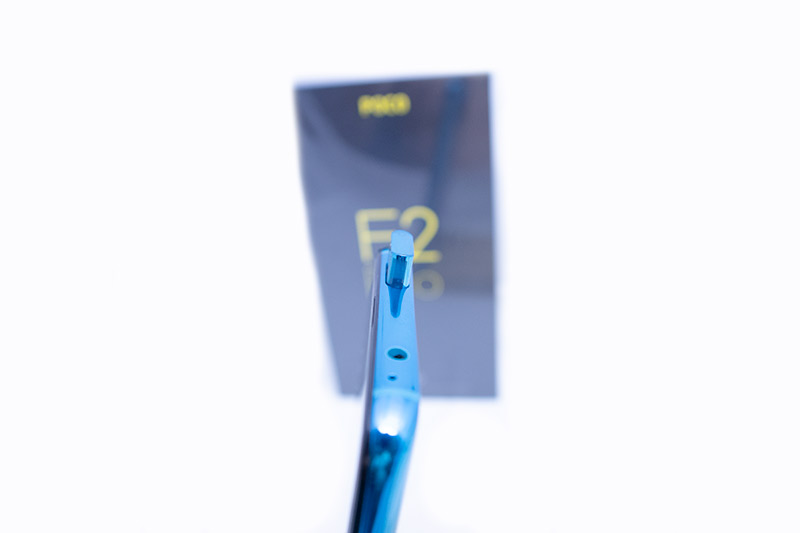
The third camera is a bit more interesting piece, just because of its name. The lower budget did not fit the zoom camera, the built-in unit was named telemacro at birth. We know from 5 megapixels that the pixels are 1,12 µm in size, and we also know that the aperture is f / 2,2. Then what this camera knows in reality will be revealed when analyzing the photos.
Last left is the depth sensor, which is 2 megapixels. I note I don’t find much sense in the depth sensor, with so many cameras there would already be other ways to implement background blur. Maybe its incorporation was important just to keep the symmetry of the camera island.
This brings us to the end of the hardware description, the tests may follow!
Photo, video - Poco F2 Pro
Once you’ve finished with the cameras, let’s start the tests with these! I’m going to write primarily about the bugs, which doesn’t mean the cameras are bad. You see the pictures too, the overall effect is basically good for all of them, you have to hunt for bugs, but that's why I'm hunting for them.
Selfie camera - 20 megapixels
The selfie camera is good! But nam is just simply good, but rather GOOD! The 20 megapixel resolution is very good, the only small weakness is the 2.2 aperture, but with normal light you can take very good pictures with it. Check it out below, I look good without facial beautification. 😀
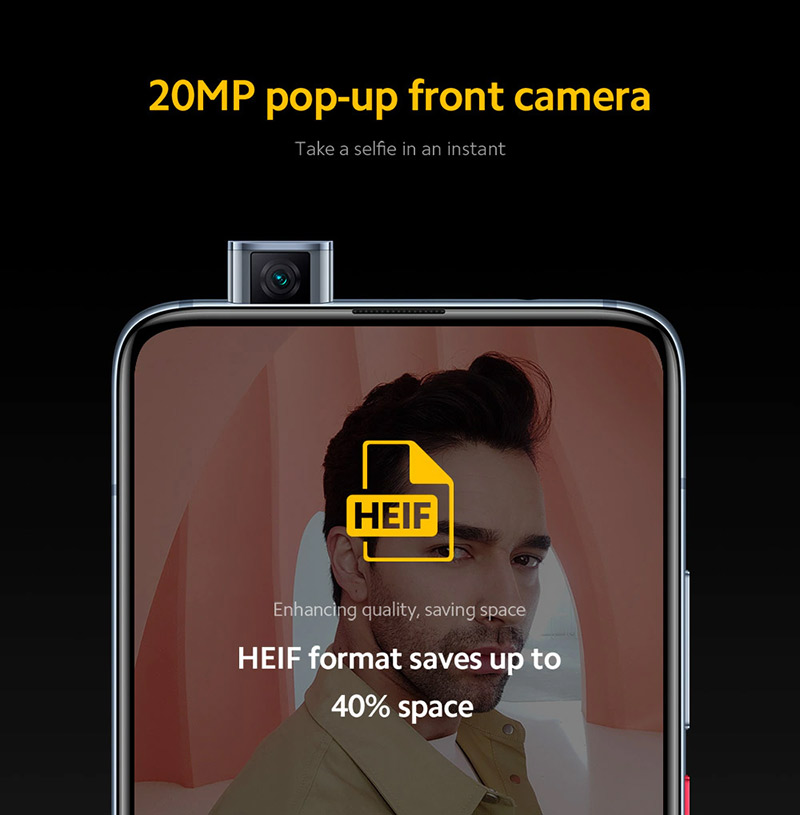
Okay, aside from the joke, this camera is really there, the colors are sharp, the sharpness is not distorted, and since it shoots in portrait mode, it really doesn't look like it's a bit blurred towards the edge, because the background is blurred anyway. everything is obscured.
The separation of the subject and the background is almost flawless, it is worth enlarging the image at the hairs. There are small flaws here and there, but not significant, the software works well.
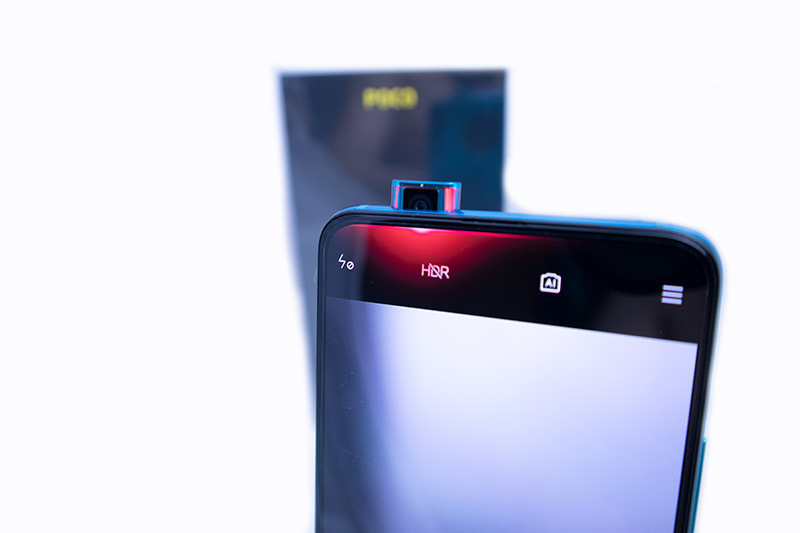
More importantly, the background blur is nice. This is important because it’s a software thing, but unlike many other phones, it doesn’t hang out!
Main camera - 64 megapixels
In general, the images taken with the Sony sensor are good, better than average, although definitely mobile quality. The colors are a little oversaturated to my liking, but not confusingly, rather just a little bit of HDR, even if we don’t use HDR. It is not possible to say that it is good or bad, there are people who will like it, others and this “color” will be little.
The defects that are common due to the small lens size and small sensor are still present now, so the edges in the image become more and more blurred as you move towards the edges, but the distortion seems to be a little smaller. The foliage of the trees, the leaves towards the edges, already tend to blur a little, but not in an eye-damaging way.
I had problems with the focus. In the case of the sculptural images, even though I poked the face as the focus point, the background became sharper than the subject. I used portrait mode on the blurred background photo, it helped, but even that wasn't perfect, the parts of the face toward us - like the ones there - focus on the parts behind.
The latter error only appears when magnified strongly in the image, i.e. it is not disturbing, but the former can be observed even if we do not enlarge the photo. It doesn’t hurt the thing, but if we look at the picture, we see that something is wrong with it.
Color management, white balance, auto ISO are pretty much okay. The sky doesn’t burn out, but there are bright parts that do. With the manual (Pro) settings it could definitely be improved a bit, but I didn't want to get into it, basically everyone uses the auto mode on the phone.
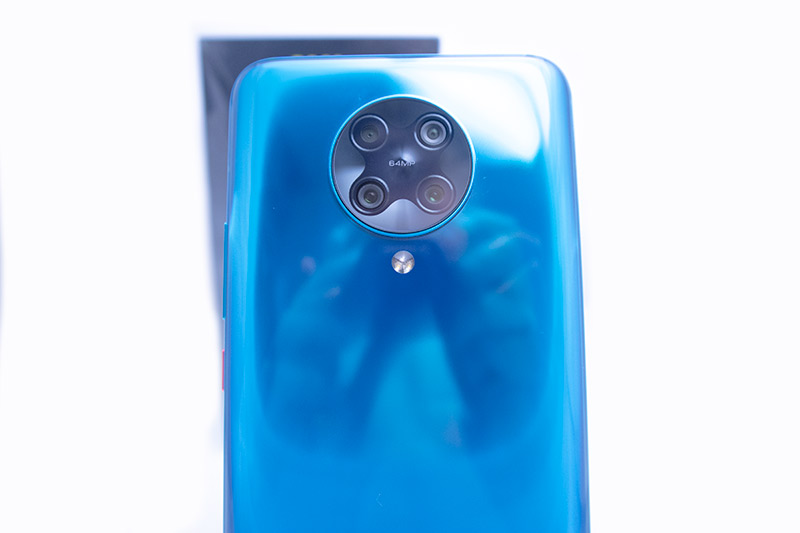
What I liked was that pictures were taken that could also be used in the dark interior of the church. The aperture of f / 1.89 is no longer outstanding for mobile cameras, but the picture shows that I wouldn't dare say bad either.
Summary: The main camera therefore gives above average quality, but more or less flaws can be detected. Not only can it be used in good light conditions, but also in a perfect dark interior, I was basically happy with the performance.
Ultra wide angle camera - 13 megapixels
This camera will basically be well suited for indoor shots, at least such a wide angle camera is used for this. The Poco’s camera pretty much brings in expectations as well.
The 13 megapixels are no longer too combo these days, but remember, a few years ago (e.g. the Xiaomi MIX 3, Mi 6, Mi A1) you can also get super images from the 12 megapixel cameras, which proved that resolution is not everything, in fact.
However, the 13 megapixel Pocophone is not like that. In sunny weather, he takes super photos outdoors, indoors, but in particularly bad light conditions, his weaknesses stand out. The finished image will be a little rich in detail, the edges will be blurred, in a word, this is far from perfect.
To say something good, the colors in the pictures are okay, and there’s one thing I appreciate above average, and that is to improve the barrel effect caused by the wide angle. Due to the angle of view, the buildings are tilted towards each other, this cannot be improved even on professional machines, but the way the curvature was taken out really needs to be glazed. With this camera, we can take really enjoyable outdoor pictures!
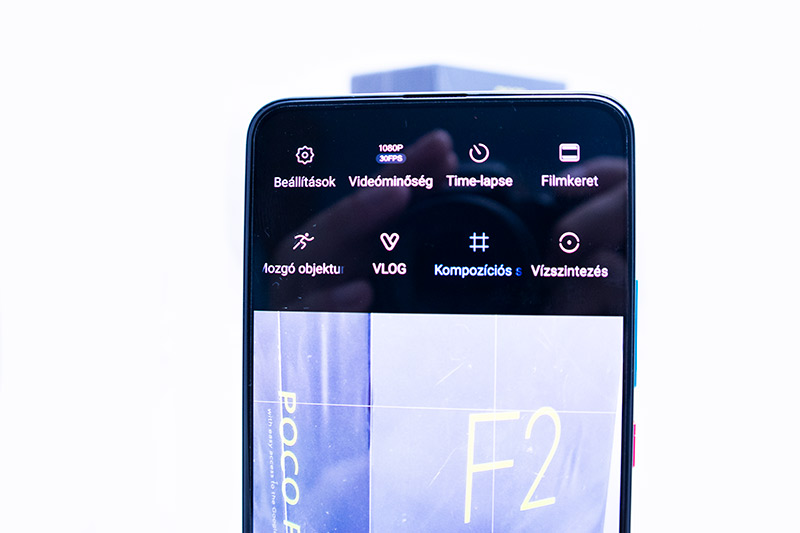
Telemacro - 5 megapixels
Before trying it, I was most curious about this camera. Instead of a normal zoom camera and a macro camera, we got a combined unit with a low, but at least no longer 2 megapixel resolution.
The phone got a double zoom, along with a software 10x magnification. The former is usable, the latter is useless, just as software zoom is usually. The 5 megapixels is quite a limitation on the zoomability, cropping out possibly better image details, turning it into a standalone image, but apart from that, there can be no complaint about the camera.
The colors are good here too, there is no problem with sharpness, neither in zoom nor in macro mode.
Depth sensor - 2 megapixels
I don’t have to design mobile camera systems, I don’t even touch it as much as those who do this job. However, I have a feeling that the depth sensor in this phone doesn’t make much sense. On the one hand, there are just enough cameras that could have been entrusted with the task, on the other hand, if we look at the self-camera, we can see that the software, artificial intelligence does its job well enough and recognizes, separates the subject, washes the background without a separate depth sensor.
In fact, in terms of design, the four cameras look good.
Summary: Double zoom is good, but it's a bit low on a top phone today. The picture quality is good and we get a macro camera that takes usable resolution pictures, which has become my personal favorite in this phone. If you can, try this close-up photo shoot with this mobile, I know you’ll love it too!
8K test video:
4K test video:
Test images:
 |  |  |
 |  |  |
 |  |  |
 |  |  |
Speed Tests - Poco F2 Pro
There are things that are unnecessary to talk about too much, and the speed test is just that. Now honestly, what can be said about today’s most powerful central tile or its speed? It’s simply a ramming experience, and it should be, because that’s exactly what the Pocophone F2 Pro is all about.
The Qualcomm Snapdragon 865 simply carries everything, there is no hurdle, no thinking. I didn’t like a single thing about the camera’s Vlog modes on the Xiaomi Mi Note 10, which is the relative slowness of the thing until the device puts the end result together from the finished videos and effects. Relative slowness, so not disturbingly slow. On the other hand, with the Poco F2 Pro, this time will be halved, and this is a good indication of the hardware difference between the two phones.
Below is the results of the usual measurements in the graph, taste the numbers!
| Poco F2 Pro | Notes redmi 8 Pro | Xiaomi Mi Note 10 | |
| Processor (SoC) | Qualcomm Snapdragon 865 | MediaTek Helio G90T | Qualcomm Snapdragon 730G |
| test Program | |||
| AnTuTu Bench. 7.x | 567392 point | 273390 points | 263723 point |
| AnTuTu Bench CPU / GPU / UX / MEM | 179102 / 216311 / 78288 / 93691 points | 97167 / 79348 / 45801 / 57074 points | 93442 / 70193 / 49522 / 50566 points |
| Geébench 5.x (score / single / multi) | 3011 / 910 / 3211 points | 854 / 3891 points | 1112 / 540 / 1716 points |
| PC Mark Work 2.0 | 9961 point | 10247 point | 7355 point |
| PC Mark Computer Vision | 6702 point | 7927 point | 4455 point |
| PC Mark Storage | 22843 point | It stops with an error | 12969 point |
| 3DMark Sling shot / extreme opengl / Vulkan | 7939 / 6677 / 6086 points | 2940 / 2382 / 2448 points | 3405 / 2387 / 2255 |
| 3D Mark Ice Storm / extreme | 71350 / MAX points | 34595 / MAX points | 39382 / MAX |
| 3D Mark API Overhead OpenGL / Volcano | 638732 / 595636 points | 84113 / 556938 points | 320272 / 297784 points |
Usage, experience - Poco F2 Pro
Let's start with the software! Anyone who loves MIUI will love Poco Launcher as well. The applications interface is customary, a lot of people write from MIUI precisely because of this lack, so this is probably the right direction. This layout can already be turned on in the new MIUI, they would be surprised if it wasn't the default soon. Flexibility is helped by pre-established groups such as communication, entertainment, etc. They can be deleted, renamed or even created.
Half how long the software would have a notification LED, if any, but no. Xiaomi has entrusted the task to the Always on Display function, which is, after all, customary. To put it a little bit, I don’t really understand why the LEDs built into the selfie camera couldn’t be used for that purpose either, it would have been better than nothing if the notification LED on the top of the camera was flashing instead of my front panel.
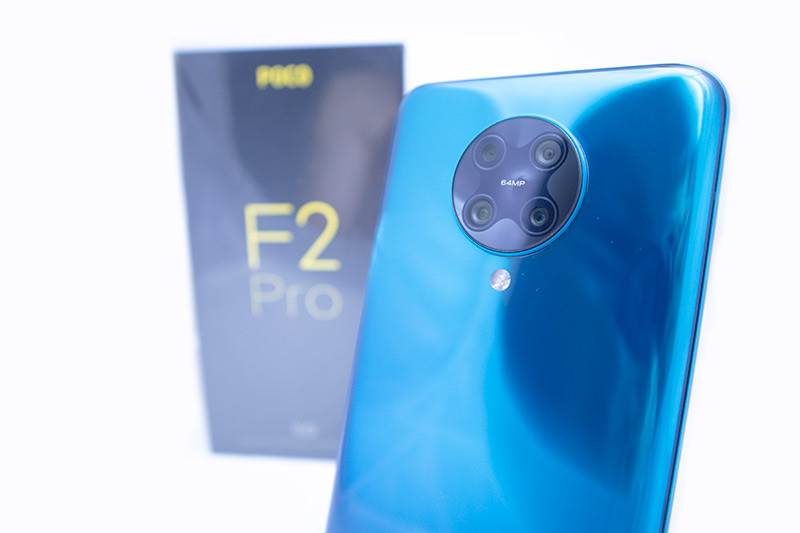
The Procophone F2 Pro, as I’ve written several times above, is a low-cost phone from Xiaomi. In one of two places, it also strikes the outside. The back is said to be glass, but if it is, it can be quite thin because it knocks as if it were made of plastic. This is not a problem, let's say, we put on the non-slip silicone back cover anyway.
But what doesn't come with a back cover is the camera group. The glass (or plastic) above this is really cheap. The camera layout itself is flashy anyway, so it’s more what’s going to attract the eye, don’t poke the bottle.
The RED power button is flashy, yet the volume control is a little more jerky than we used to get from Xiaom. Let’s say with the silicone backing, this too becomes a trivial defect because the plastic will be pressed, not the button.
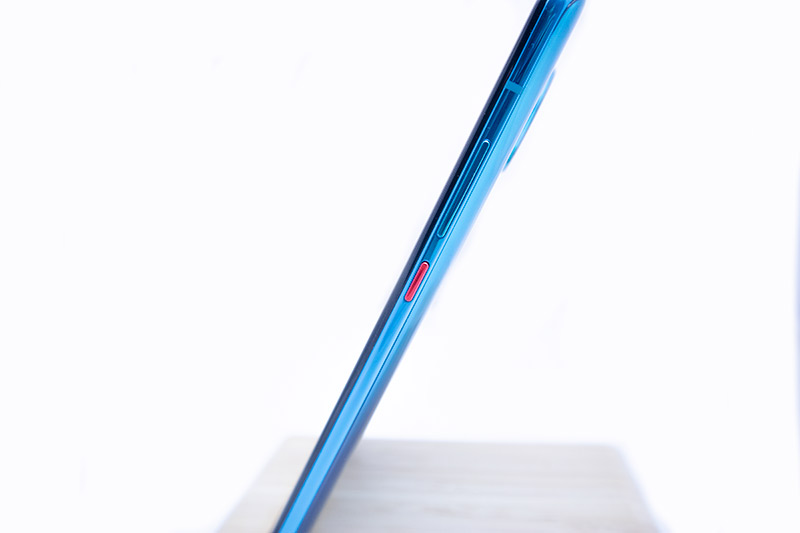
It is good to take photos and cameras with the phone. You may have read above that there is a momentum in this area that I was able to relate to, but overall the experience is there. This phone is already well-suited to replace a simple Moroccan camera, and even with a little dexterity for even more.
What I don’t see any point in, though, is the 8K shot. At this resolution, the vibration damping is zero, and a maximum of normal videos could be taken when the phone was on a tripod. But no, not even because the picture is like being scaled up from 4K. I’m not even talking about the fact that the 2,5-minute test video was generated on the i7 with plenty of memory for more than an hour. So in short, don’t buy it because of the 8K video!
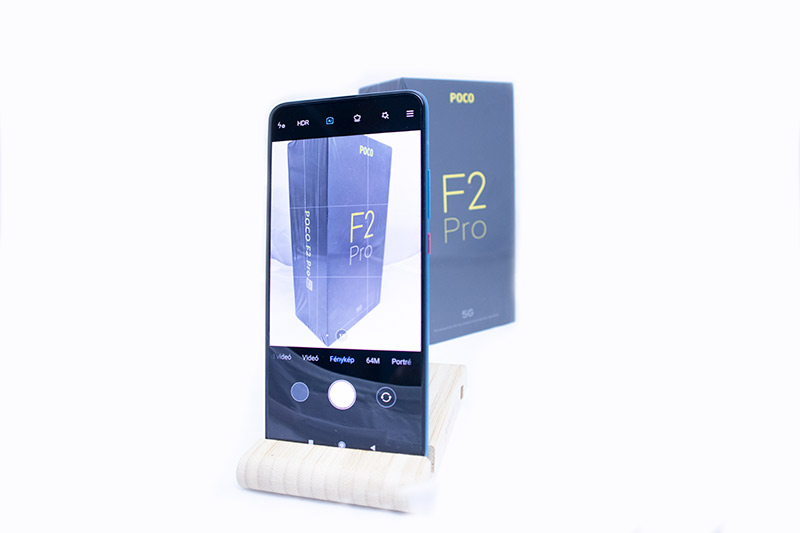
The display is almost perfect, but only almost. AMOLED is obviously brutal good, the brightness burns your eyes, and you get black enough to go in, behu. What's wrong then?
The trouble is that the Pocophone is made in part for players, which is supported by many things. These include a huge display, a brutal processor, the largest surface area with the most efficient liquid cooling to date, a red power button, or an LED light effect on the self-timer camera. And if it’s made for gamers, it’s incomprehensible why a screen update of at least 90 Hz failed to be included in the package. It doesn’t seem to fit into the price, and that could be a serious competitive disadvantage.
Just as wireless charging didn’t fit, unfortunately, which I didn’t quite understand. When they can get into a $ 150 UMIDIGI, why not a $ 500 Pocophone? And now let this question float a little in the air….
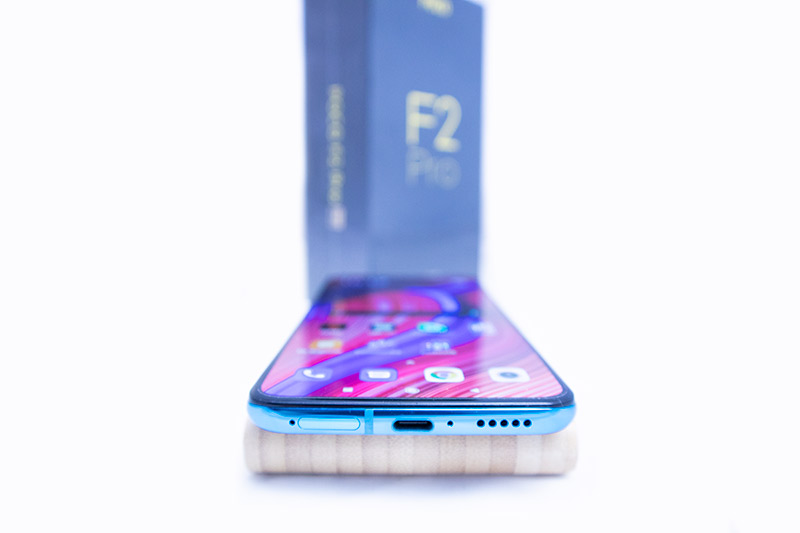
After all the bad, come again, something good. This phone is something quite amazingly powerful. No wonder it has the most powerful mobile processor currently available, and it fits in. Its performance is really amazing, one that I don’t think 80 percent of customers will even take advantage of.
However, of course beef it feels good to use the phone and it feels weird afterwards to take a slower cell phone again. I think that’s when we figure out what amazing muscles we need.
I almost forgot, though, above I mentioned the vibration tangentially. It’s also a dude, much better than anything like that phone could. At least from those that went to me. Maybe it became so good for the sake of the players. I can’t really even determine what’s so good about it. Somehow not only does it vibrate, but its 3D vibrates as if there is a direction to the vibration.
The navigation is so Xiaomis, meaning you won't find any flaws in it. But really not, dirt is fast even the first time you use it, and how many satellites you handle makes it impossible for bucks you come across on cheaper mobiles.

The Pocophone F2 Pro has a large battery. I’d say I’ve tested it and you can really keep videoing on it for a day, but I’d be lying. Not that he can stand that one day, because I have no idea about that. What I do know, though, is that I’m pushing non-stop, watching a part of one of my series on it in the evening, and two days so it’s loose. I know there could be more, but for now, I wouldn’t dare say use is average, by no means. Then maybe once, if I'm used to it.
To sum up, and considering my criticisms, this phone is very good. Not flawless, nowhere near, but stand up who can show a perfect cell phone! Okay, you, right back, sit down and don't flutter your iPhone, that's not it!
Summary - Poco F2 Pro
Xiaomi introduced the Pocophone F1 two years ago, which was a very successful phone, at least from a business standpoint. He found a layer of customers who needed one of the strongest phones on the market, plus they turned a blind eye to shortcomings like the noticeably cheap house or weak cameras in return.
The Pocophone F2 Pro was made from the same recipe as its predecessor, but it got a little different. On the outside, the Xiaomi couldn’t carve too cheap, because even an Ulefone or an UMIDIGI phone can look good, not to mention an Elephone. So there was no room here, or at least there was little room for cheapening.
Again, you couldn’t save too much on hardware. The proci (SoC) was given, the strongest was needed. As I wrote, only LPDDR6x memory was included in the 4GB version, which could save some money.
What you could catch the most were the cameras. For my part, in the main camera field, I loved last year’s surprise, the Redmi Note 8 Pro, more than I love the Poco F2 Pro now. What worked well in the package is the selfie camera and the macro camera, the rest is strong medium.
Of course, there’s a limit here that you shouldn’t go into anymore, so, and because of that, Poco cameras are more than usable, just not exactly solutions that fit into a real high-end phone. They weren't in the Poco F1 either.
The final question is whether the phone is worth the price!
Well, here come the problems. Unfortunately, the prices of top phones have risen roughly in recent years. Of course, Xiaomi has also taken up this trend, so in a year their current top-of-the-line mobile phone has risen in price by roughly 20 percent, making them still among the cheaper manufacturers.
Unfortunately, the price of the Poco also got much higher than it was two years ago. For this reason, I think that for many, the price of $ 500, or roughly 160 thousand forints, will be above the pain threshold, I say this even if we know, for so much money, we can't get such a strong phone from another manufacturer.
However, there is money that the majority is reluctant to pay, even if we are talking about a top phone.
So, the answer is not simple, because on the one hand there is no question that the Pocophone 2 Pro is well worth the price, on the other hand, the higher price can significantly narrow the solvent layer.
If you want one of the strongest mobile phones on the market and are not willing to pay more than $ 500 (~ 160.-) for it, you can now order it from a European warehouse (stock symbol: ES) with a short delivery time from the link below. If you prefer to save and it is not a problem if the delivery takes longer, switch to a Chinese (HK) warehouse and save 000 forints. Remember, when ordering from China, choose duty and VAT free EU Priority Line delivery! Of course, there is no customs and VAT, as we are talking about intra-EU purchases.
Buy here:
POCO F2 Pro Global version 6 GB / 128 GB
Evaluation
93%
Evaluation Poco F2 Pro has become one of the most powerful, but by no means the most expensive phones in the world. Brutal force was packed into it, compared to that, the price could even be said to be friendly. Your cameras can be used, the design is a star five, so I can only recommend your purchase!










